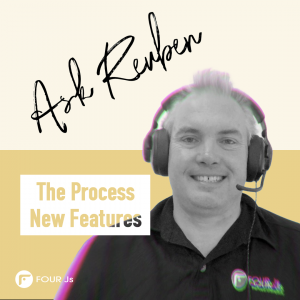Ask Reuben – December 15, 2022
The Process : New Features
Something has changed in Genero, I would like the previous functionality.
There have been a number of support questions recently where customers are upgrading to Genero Enterprise 4.01, and commenting on some changes we have made to our product. As background, I would like to make two main points. For an ISV, they need to focus on what the market wants and produce an application that meets the market. An Enterprise customer does not have that same commercial pressure. In the early 2000’s, ISV’s needed an application that worked with Windows GUI Desktops, hence the growth of these customers and Genero as they used the Genero Desktop Client (GDC) to transform their TUI applications into GUI applications. The ISV’s needed a GUI application to stay relevant and continue to sell. In recent years, those same ISV’s have needed a Web application in order to stay relevant and continue to sell. These ISV’s have typically transformed their application to run in a browser via the various incarnations of Genero Web Client and now Genero Browser Client. An ISV’s product is continuously evolving, and the ISV is continuously evaluating and incorporating new features as they are added to Genero. Genero customers, typically Enterprise Customers, are upgrading to Genero 4.01 from versions older than 3.20. As they do so they are commenting on changes made to our product. As I write this in the first quarter of 2023, these are changes typically implemented in 2018/2019, over 4 years ago. These are changes that have been adopted and used by our ISV community for a number of years. With a new release, we run Early Access Programs. This is where you have the opportunity to participate in the improvements and changes we are making to our product. It is preferable that we tweak and refine changes during this period. Once something has been released, it becomes more difficult to make these refinements. To learn what is new and what has changed, the following resources are available to you. Make sure that you stay informed. Make use of the resources listed above to note what changes are being made as they occur. As an example, the concept of Universal Rendering as Standard should not be new to you. The concept of the Top Most Normal Window and how many applications are rendered in a single Browser Tab should not be new to you. I can understand customers not wanting the business disruption of upgrading every time we issue a release. However that does not stop you in your development or QA area, downloading a release, recompiling your Genero application, and running your basic QA tests. This allows you to make sure we have not broken anything important to your application, and feedback you provide can be incorporated closer in time to when the work is done. If you have fallen behind, there is no magic bullet to help you catch-up. You can seek assistant from your local support contacts who can pass on their experience from working with early adopters.Background
The Problem
The Process
What You Can Do

